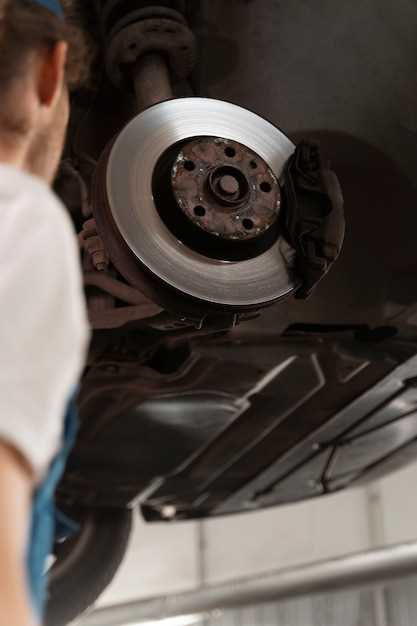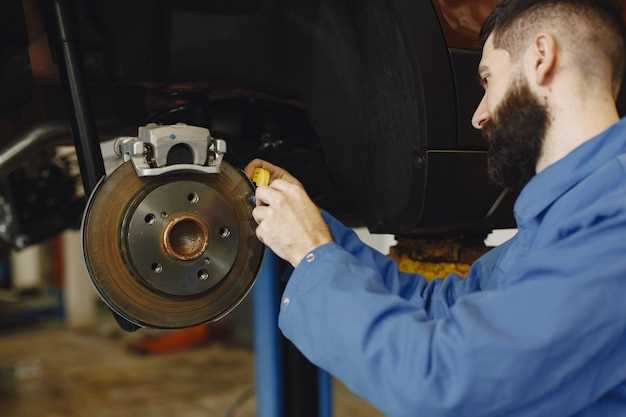
The performance of your vehicle’s braking system is crucial for your safety on the road. Over time, the brake components can experience significant wear, leading to reduced effectiveness and potentially dangerous situations. It is essential to recognize the signs that indicate it’s time to replace your car brakes, ensuring your vehicle remains safe and reliable.
Many drivers may overlook the importance of regular brake maintenance, but paying attention to specific symptoms can prevent severe consequences. Unusual noises, such as squeaking or grinding, often signal that your brakes are in distress. Additionally, a spongy or unresponsive brake pedal can indicate that the brake fluid is low or that there is a problem with the brake system that requires immediate attention.
Furthermore, if you notice that your vehicle pulls to one side when braking, it could be a sign of uneven wear on the brake pads. Being aware of these indicators can empower you to take timely action, ultimately extending the lifespan of your vehicle and enhancing your overall driving experience.
Unusual Noises Indicating Brake Wear
One of the most noticeable signs that your brakes may need attention is the presence of unusual noises when you apply them. These sounds can indicate that the brake components are experiencing significant wear.
For instance, if you hear a high-pitched squealing or squeaking sound, this often suggests that the brake pads have worn down to a point where the wear indicator is making contact with the rotor. This is a clear warning that it’s time to replace the brakes to prevent further damage.
Another sound to be aware of is a grinding noise, which typically occurs when the brake pads are completely worn out, leading to metal-on-metal contact. This not only compromises the brake system’s performance but can also result in costly repairs if the rotors are damaged.
If you hear a pulsing noise or feel a vibration in the brake pedal, it could indicate warped rotors caused by excessive wear or overheating. This situation calls for immediate inspection and potential replacement of brakes to ensure safety and efficiency.
In conclusion, if you notice any unusual noises when engaging your brakes, it’s essential to have them evaluated promptly to avoid further wear and ensure optimal performance.
Decreased Stopping Power: When to Be Concerned

When your vehicle’s braking ability diminishes, it can have serious implications for your safety on the road. Recognizing the signs of decreased stopping power is crucial for timely intervention. Here are key indicators that suggest you may need new brakes:
- Squeaking or Grinding Noises: If you hear unusual sounds when applying the brake, it may indicate worn-out brake pads that compromise stopping power.
- Increased Stopping Distance: If you notice that your car takes longer to stop than usual, it’s a clear sign that your brakes may need replacement.
- Soft or Spongy Brake Pedal: A brake pedal that feels less responsive or sinks to the floor may indicate brake fluid issues or severe wear.
- Vibration or Pulsation: If the steering wheel shakes upon braking, this may signal warped brake rotors, affecting braking efficiency.
- Brake Warning Light: If the dashboard indicator illuminates, it’s essential to check your braking system, as this could indicate a need for new brakes.
Ignoring these signs can lead to decreased stopping power, increased stopping distances, and ultimately, unsafe driving conditions. If you experience any of these symptoms, it is advisable to have your brakes inspected and potentially replaced as soon as possible.
Visual Signs of Brake Pad Deterioration

One of the most apparent signs that your brake pads are deteriorating is the presence of grooves or scoring on the surface of the pads. These marks indicate that the pads are wearing unevenly, which can compromise their effectiveness. When inspecting your brakes, look for any visible damage or irregular patterns on the pads.
Another visual cue is the thickness of the brake pads themselves. New brake pads typically have a thickness of around 10 to 12 millimeters. If you notice that the pad material is less than 3 millimeters thick, it’s a strong indication that replacement is necessary. A thin pad increases the risk of brake failure.
Pay attention to the dust that accumulates on your wheels; excessive brake dust can signal that the pads are wearing rapidly. If you frequently find a fine layer of dust on your rims, it’s a sign that the brakes are not functioning optimally. Additionally, some brake pads are designed with built-in indicators that create a squealing noise when it’s time for a replacement. If you hear these sounds, inspect the pads immediately.
Lastly, take note of any discoloration or burning smell when applying the brakes. This can result from overheating, which can severely damage brake pads and other components. If you observe these symptoms, it’s crucial to assess the health of your brakes without delay.




